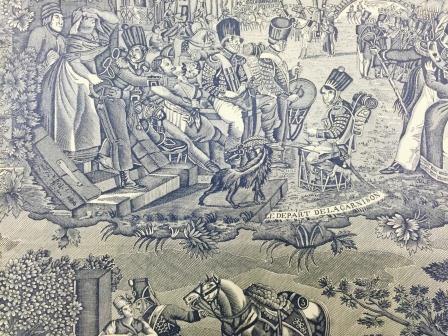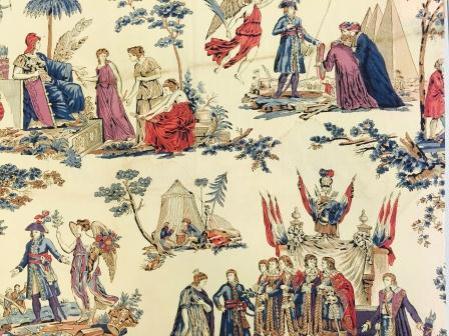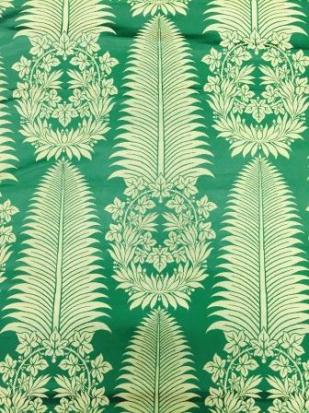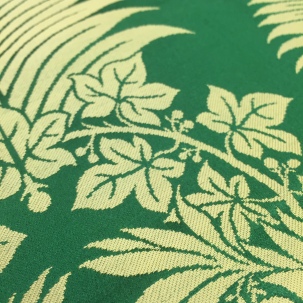To celebrate the 200th anniversary of the Battle of Waterloo, the BBC has produced a series of television and radio programmes that challenge well-held views on Napoleon, his strategies and the legacies left.
One such legacy of this tumultuous and stimulating period in history is the influence this fascinating man had on creating a defined style that has lasted through to the present day.
Born in Corsica during the summer of 1769, Napoleon served in the French Military and became an influential political leader, rising to prominence during the French Revolution.
As he gained ground through smaller battles, the French people came to see Napoleon as a strident force. In 1798 he commanded a military expedition to Egypt, conquering the Ottoman province. Through the discoveries made during this time, an interest in modern Egyptology was launched.
Copper roller printed cotton, with hand blocked additional colour, c.1810, French
This interesting example depicts the highlights of Napoleon’s campaigns, with the Egyptian expedition shown top-right. These sorts of textiles were popular during their day as an alternative to positivizing political literature and were laden with clear messages to all.
Growing in power, Napoleon soon came to dominate European affairs. From 1804 he began his 11 year long tenure as Emperor of the French. The period prior to his reign and during was defined by great military might and enforced subscription became the norm, and fear, of many French families.

Copper roller printed toile, 1800s, French
The pattern on this illustrative toile portrays dramatic scenes of countrymen going to war, leaving their homes and families behind. With its incredible detailing, the fabric expresses the negative alternative to the popular views of Napoleon’s rule, showing the great sadness of departure and the broken men this formed.
One of the greatest commanders in history, greatly travelled and with an exotic and sophisticated wife, Napoleon viewed the ‘old style’ of design, before the Reign of Terror, as representative of an unhealthy and extravagant royalist lifestyle, one which he had worked hard to destroy.
Although the emphasis on motifs and representation remained in an altered form, throughout the Napoleonic period the fashion for softer tones and a lighter palette with simpler flourishing and gold detailing came to the fore. Many designs were created to reflect the new French empire using symbols such as the wreath in a strong and simplistic manner.
A hand woven silk tissue, 1840s, English
This example of wreath and fern motif originated from this period and became fashionable some years later in England. Its popularity continued throughout the 19th century and up to the outbreak of WWII. Its sophisticated and elegant shapes afforded flexibility thus helping to sustain its familiarity throughout the design world. It is now considered a classic in modern terms.
Whilst he remains one of the most controversial political figures in western history, ironically the ‘Empire’ style that Napoleon was integral in developing has conversely grown to become a symbol of elegance and taste for the well-heeled.


